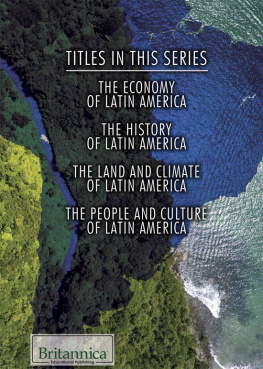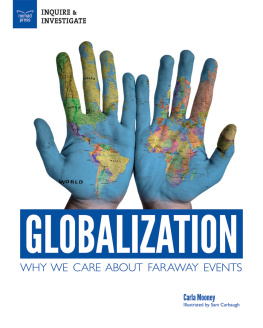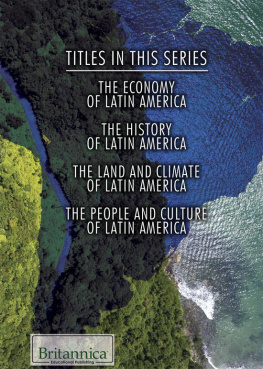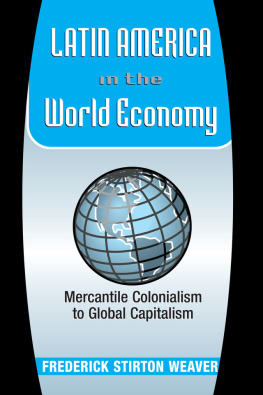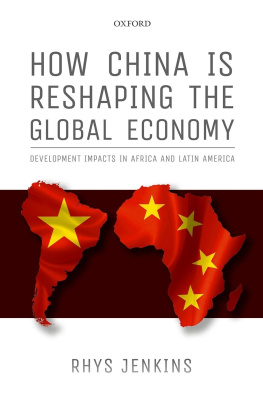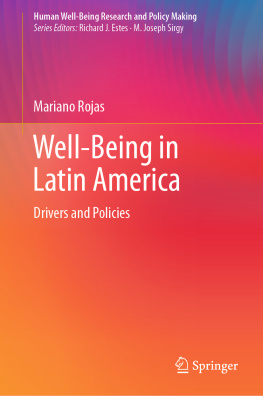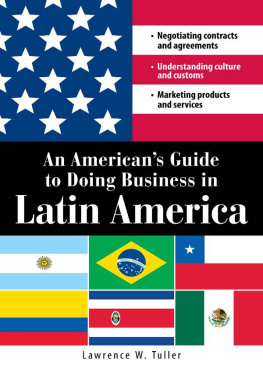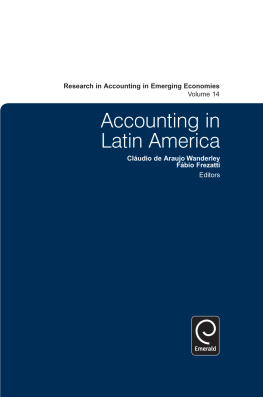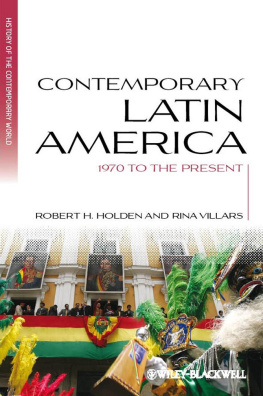
Published in 2018 by Britannica Educational Publishing (a trademark of Encyclopdia Britannica, Inc.) in association with The Rosen Publishing Group, Inc.
29 East 21st Street, New York, NY 10010
Copyright 2018 The Rosen Publishing Group, Inc. and Encyclopdia Britannica, Inc. Encyclopdia Britannica, Britannica, and the Thistle logo are registered trademarks of Encyclopdia Britannica, Inc. All rights reserved.
Distributed exclusively by Rosen Publishing.
To see additional Britannica Educational Publishing titles, go to rosenpublishing.com.
First Edition
Britannica Educational Publishing
J.E. Luebering: Executive Director, Core Editorial
Andrea R. Field: Managing Editor, Comptons by Britannica
Rosen Publishing
Carolyn DeCarlo: Editor
Nelson S: Art Director
Michael Moy: Series Designer
Michael Moy: Book Layout
Cindy Reiman: Photography Manager
Karen Huang: Photo Researcher
Library of Congress Cataloging-in-Publication Data
Names: Mooney, Carla, 1970- author.
Title: The economy of Latin America / Carla Mooney.
Description: First Edition. | New York : Britannica Educational Publishing, [2018] | Series: Exploring Latin America | Includes bibliographical references and index.
Identifiers: LCCN 2016057937 | ISBN 9781680486803 (eBook)
Subjects: LCSH: Latin AmericaEconomic conditionsJuvenile literature. |
Economic developmentLatin AmericaJuvenile literature.
Classification: LCC HC125 .M6146 2017 | DDC 338.98dc23
LC record available at https://lccn.loc.gov/2016057937
Manufactured in the United States of America
Photo credits: Cover, p. 20: Martin Bernetti/AFP/Getty Images; pp. 4-5, 9, 18, 25, 32, 39 (background) f11photo/shutterstock.com; p.4 Getty Research Institute/Science Source; pp. 5, 11 Encyclopaedia Britannica, Inc.; p. 7 Christopher Corr/Ikon Images/Getty Images; p. 10 Cultura RM Exclusive/Philip Lee Harvey/Getty Images, pp. 14-15 Stockbyte/Thinkstock; p. 16 Robert Harding Picture Library; p. 19 Andrey Plotnikov/Fotolia/Encyclopaedia Britannica; p. 21, 30, 40 Bloomberg/Getty Images; p. 22 Pav Jordan/Reuters/Newscom; p. 26 Jo Kearney/Corbis Documentary/Getty Images; p. 27 John Seaton Callahan/Moment/Getty Images; p. 28-29 Joe Raedle/Hulton Archive/Getty Images; p. 33 Grant Ordelheide/Getty Images; pp. 34-35 Venturelli Luca/Shutterstock.com; p. 36 The Asahi Shimbun/Getty Images; p. 41 cokada/E+ /Getty Images; p. 43 Robert Daemmrich Photography Inc./Sygma/Getty Images; back cover By Filipe Frazao/Shutterstock.com.

CHAPTER ONE
AGRICULTURE, FISHING, AND FORESTRY
CHAPTER TWO
NATURAL RESOURCES
CHAPTER THREE
MANUFACTURED GOODS
CHAPTER FOUR
TOURISM AND SERVICES
CHAPTER FIVE
ECONOMIC FUTURE
T he region of Latin America covers all the Americas south of the US borderMexico, Central America, South America, and the West Indiesabout 15 percent of the earth. Its diverse land includes rain forest, desert, and savanna. The largest countries in Latin America by area are Brazil, Argentina, Mexico, Peru, Colombia, Bolivia, Venezuela, and Chile. Historically, their economies have traditionally been driven by the production of commodities such as oil, silver, and corn. In more recent years, growth in services and manufacturing have played a larger part in their markets overall.
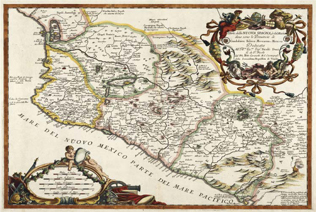
A Spanish map from the sixteenth century shows the region that is modern-day Mexico. Most of Latin America was ruled by Spain or Portugal.
From the late fifteenth through the eighteenth centuries, Portugal and Spain controlled most of mainland Latin America. Spain, the Netherlands, Britain, and France controlled various Caribbean islands. In the early nineteenth century, independence movements swept through most of Latin America. Today, most Latin American countries are independent nations, although some West Indian islands remain part of European nations.
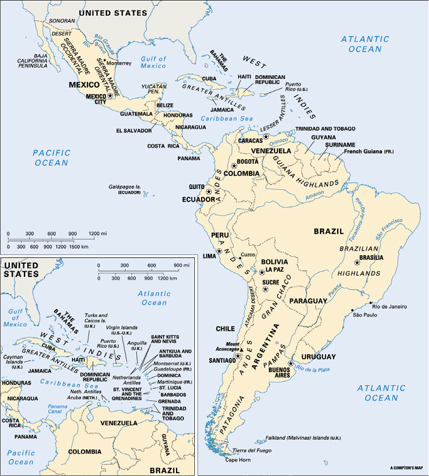
Latin America stretches from Mexico in the north to the tip of South America, including all of the countries that make up Central America, South America, and the West Indies.
After gaining their independence, many Latin American countries set up republics. They modeled these governments after governments in northern Europe and the United States. Many countries experienced political instability. National governments were rapidly replaced. This political instability also affected the regions economies. The countries struggled to find sources of income to pay for new military and government expenses. The governments commonly found themselves in financial difficulties.
In the nineteenth century, industrialization spread through Europe and North America. These countries turned to Latin America for its raw materials. By the second half of the nineteenth century, Latin America became an important exporter of raw materials. Most Latin American countries had one or two main exportstypically minerals or foodsuntil the 1950s. Relying on only a few exports made these countries vulnerable to changes in global demand.
Although many people talk about Latin America as one region, there are enormous differences in the area. The people live in a large number of independent nations, and the geography and climate of each country can vary greatly. As a result, the economies of each nation are diverse. Areas such as Mexico and Central America export many manufactured goods, while countries in South America are major exporters of agricultural commodities, petroleum, and minerals such as iron ore.
Most of Latin Americas economies rely on capitalism. In this type of economy, trade and industry are generally controlled by private companies. However, the governments intervene in some areas of investment, industry, land ownership, and trade.

Made up of many independent countries, Latin America is a very diverse region that is rich in natural resources. Each area has its own native plants, animals, and resources.
Today, agriculture remains an important part of the Latin American economy. In general, about one-fourth of Latin American workers work in agriculture. In some poorer countries like Haiti and Nicaragua, the number is even higher. Services are a large and growing economic sector, while manufacturing remains important. Still, Latin America depends heavily on its exports of commodities, which makes it vulnerable to changes in market demand and world prices.

L atin Americas economy relies on the export of foods and primary goods, such as coffee from Brazil and Colombia, beef from Argentina, and bananas from Ecuador. It also benefits from rich fishing grounds in the Caribbean Sea, Atlantic Ocean, and Pacific Ocean.
Agriculture and Farming
Many of Latin Americas staple foods have been grown since ancient times, including corn, beans, and squash in Mexico and Central America; quinoa, corn, and potatoes in the Andes; and cassava and citrus fruits in lowland rain forests. Rice, plantains, and bananas are vital to the Latin American diet.

